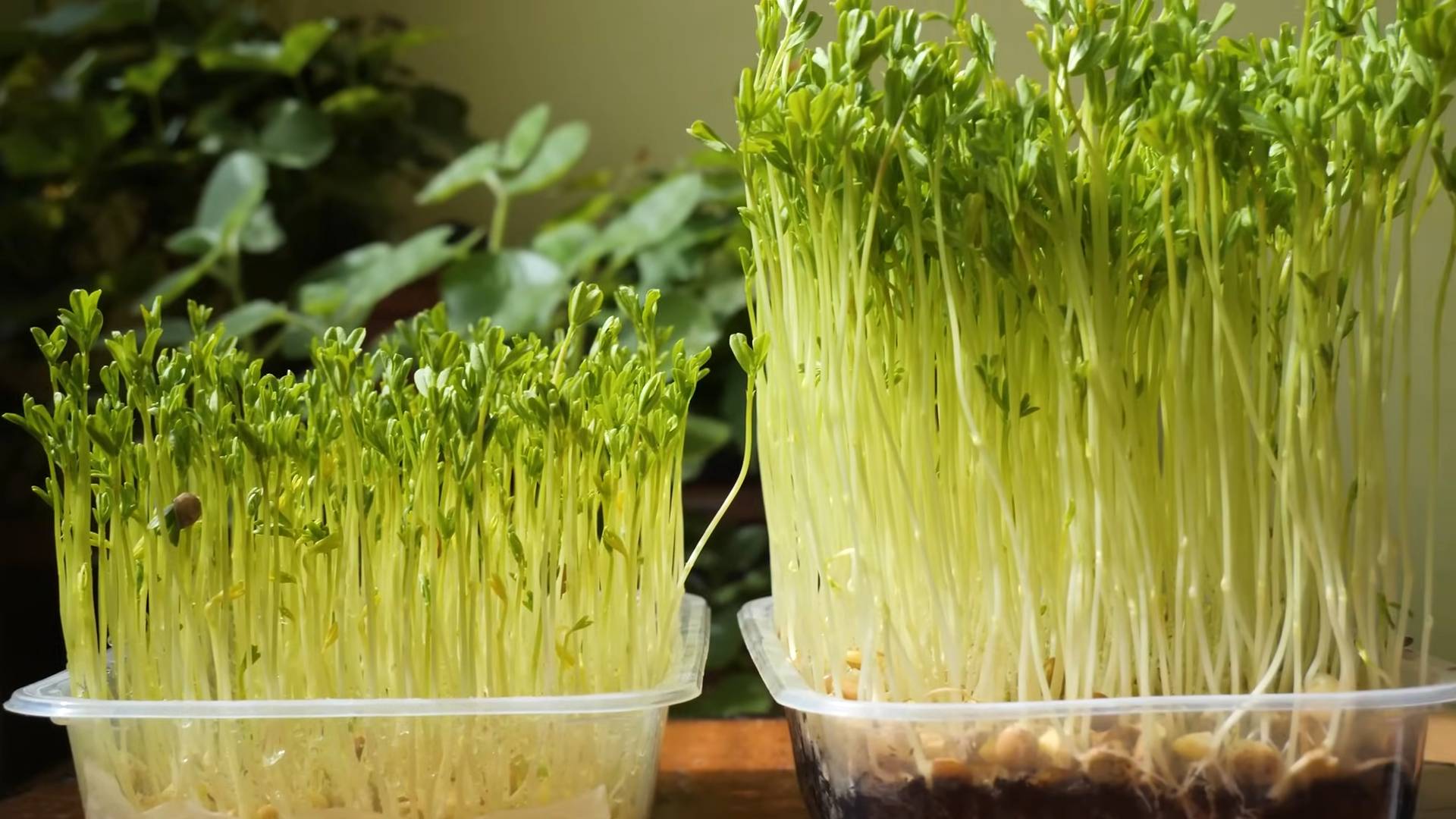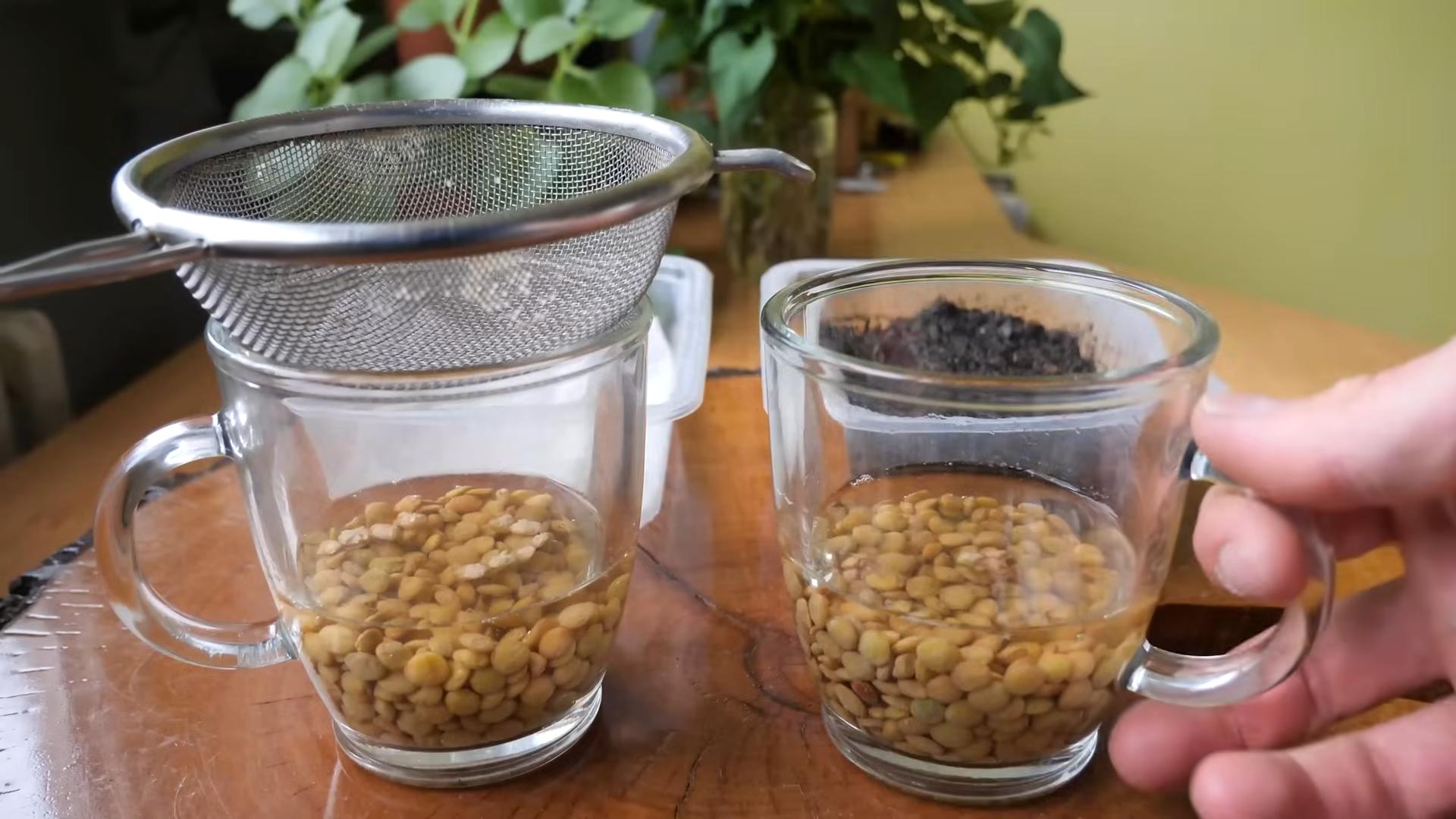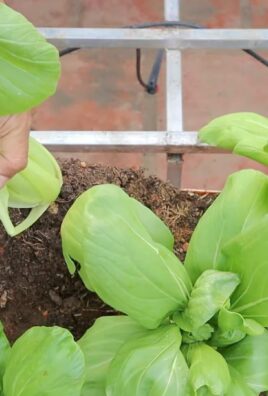Grow Microgreens at Home – ever dreamt of having a tiny, vibrant, and incredibly nutritious garden right on your kitchen counter? Imagine snipping fresh, flavorful greens to sprinkle on your salads, sandwiches, or even your morning smoothie, all without stepping foot outside! This isn’t some futuristic fantasy; it’s the reality of growing microgreens, and I’m here to show you how incredibly easy and rewarding it can be.
Microgreens, those tiny seedlings packed with flavor and nutrients, have a surprisingly rich history. While their popularity has exploded in recent years, chefs have been using them as garnishes and flavor enhancers for decades. But beyond the culinary world, the practice of sprouting seeds for food dates back thousands of years, with evidence found in ancient Chinese and Roman cultures. They understood the power of these little nutritional powerhouses!
Why should you jump on the microgreen bandwagon? Well, in today’s busy world, access to fresh, healthy produce can be a challenge. Supermarket greens often travel long distances, losing nutrients along the way. Growing microgreens at home offers a solution: a sustainable, cost-effective, and incredibly convenient way to boost your diet with vitamins, minerals, and antioxidants. Plus, it’s a fantastic way to connect with nature, even if you live in an apartment. I’m going to share some simple DIY tricks and hacks that will have you harvesting your own delicious microgreens in no time. Get ready to unleash your inner urban farmer!

Grow Your Own Microgreens: A Beginner’s Guide
Hey there, fellow gardening enthusiasts! I’m so excited to share my experience with growing microgreens at home. It’s easier than you think, and the payoff is huge – fresh, nutrient-packed greens right at your fingertips! Plus, it’s a fantastic way to add a burst of flavor and color to your meals, especially during those long winter months when your garden might be looking a little bare. So, let’s dive in!
What are Microgreens?
Before we get started, let’s quickly define what microgreens actually are. They’re essentially baby vegetable greens, harvested just after the cotyledon leaves (the first leaves to emerge from the seed) have developed. They’re bigger than sprouts but smaller than baby greens, and they’re packed with flavor and nutrients. Think of them as tiny powerhouses of goodness!
Why Grow Microgreens?
There are so many reasons to grow your own microgreens! Here are just a few:
* Nutrient-Rich: Microgreens are incredibly nutrient-dense, often containing higher levels of vitamins and minerals than their mature counterparts.
* Fast Growing: You can harvest most microgreens in just 7-14 days. Talk about instant gratification!
* Space-Saving: You don’t need a huge garden to grow microgreens. They thrive in small containers on a windowsill or under grow lights.
* Year-Round Harvest: You can grow microgreens indoors year-round, regardless of the weather outside.
* Delicious Flavor: Microgreens add a unique and intense flavor to salads, sandwiches, soups, and more.
* Cost-Effective: Growing your own microgreens is much cheaper than buying them at the store.
* Fun and Rewarding: It’s incredibly satisfying to watch your tiny seeds sprout and grow into delicious greens.
Choosing Your Seeds
The first step is selecting the right seeds. Not all seeds are created equal when it comes to microgreens. Here are some popular and easy-to-grow options:
* Radish: Spicy and peppery.
* Broccoli: Mild and slightly sweet.
* Sunflower: Nutty and crunchy.
* Pea Shoots: Sweet and tender.
* Mustard: Pungent and flavorful.
* Arugula: Peppery and slightly bitter.
* Cilantro: Fresh and citrusy.
* Beet: Earthy and sweet.
* Kale: Earthy and slightly bitter.
Important Note: Always use seeds that are specifically labeled for sprouting or microgreens. Avoid using seeds that have been treated with fungicides or other chemicals.
Gathering Your Supplies
Now that you’ve chosen your seeds, it’s time to gather your supplies. Here’s what you’ll need:
* Growing Trays: You’ll need two trays – one with drainage holes and one without. The tray without drainage will act as a water reservoir. I like to use shallow plastic trays, but you can also use repurposed containers like takeout containers or yogurt tubs (just make sure they’re clean!).
* Growing Medium: You can use a variety of growing mediums, such as potting soil, coco coir, or a soilless mix. I prefer coco coir because it’s lightweight, holds moisture well, and is sustainable.
* Spray Bottle: For misting your seeds and seedlings.
* Seeds: Of course!
* Weight (Optional): A small weight, like a book or a brick, to help the seeds germinate evenly.
* Grow Lights (Optional): If you don’t have a sunny windowsill, you can use grow lights to provide adequate light for your microgreens.
Step-by-Step Instructions: Growing Your Microgreens
Okay, let’s get our hands dirty! Here’s a step-by-step guide to growing your own microgreens:
1. Prepare Your Growing Tray: Fill the tray with drainage holes with your chosen growing medium. Moisten the medium thoroughly with water, making sure it’s evenly damp but not soggy. You can use your spray bottle or gently pour water over the medium.
2. Sow Your Seeds: Sprinkle your seeds evenly over the surface of the growing medium. The density of the seeds will depend on the type of microgreen you’re growing. For smaller seeds like radish or broccoli, you can sow them quite densely. For larger seeds like sunflower or pea shoots, you’ll want to space them out a bit more. Don’t be afraid to experiment to find what works best for you!
3. Cover Your Seeds (Optional): Some people like to cover their seeds with a thin layer of growing medium or vermiculite. This helps to keep the seeds moist and encourages even germination. I usually skip this step, but it’s worth trying if you’re having trouble with germination.
4. Mist Your Seeds: Gently mist the seeds with water using your spray bottle. You want to keep the seeds moist but not waterlogged.
5. Weight Your Seeds (Optional): Place a weight on top of the seeds to help them germinate evenly. This is especially helpful for seeds that tend to sprout unevenly, like sunflower seeds. I usually use a small book or a brick wrapped in plastic wrap. Leave the weight on for 2-3 days, or until the seeds have started to sprout.
6. Blackout Period: Cover the tray with a lid or place it in a dark place for 2-3 days. This helps to encourage the seeds to germinate. The darkness mimics the conditions underground, where seeds naturally sprout.
7. Introduce Light: Once the seeds have sprouted, remove the lid or take the tray out of the dark. Place the tray in a sunny windowsill or under grow lights. If you’re using grow lights, keep them on for 12-16 hours per day.
8. Water Regularly: Keep the growing medium moist by watering regularly. The best way to water microgreens is from the bottom. Pour water into the tray without drainage holes, and the growing medium will absorb the water from below. This helps to prevent damping off, a fungal disease that can kill young seedlings.
9. Monitor Growth: Watch your microgreens grow! You should start to see the cotyledon leaves (the first leaves) emerge within a few days.
10. Harvest Your Microgreens: Once the microgreens have developed their cotyledon leaves and are about 1-2 inches tall, they’re ready to harvest. This usually takes 7-14 days, depending on the type of microgreen. To harvest, simply snip the stems just above the growing medium with scissors.
11. Enjoy Your Harvest: Rinse your microgreens with water and enjoy them in salads, sandwiches, soups, or as a garnish.
Troubleshooting Tips
Even with the best intentions, sometimes things don’t go as planned. Here are a few common problems and how to fix them:
* Poor Germination: Make sure your seeds are fresh and viable. Also, ensure that the growing medium is moist but not waterlogged.
* Mold Growth: Mold can be a problem if the growing medium is too wet or if there’s not enough air circulation. To prevent mold, make sure to water from the bottom and provide adequate ventilation. You can also try spraying the microgreens with a diluted solution of hydrogen peroxide.
* Leggy Growth: Leggy growth occurs when the microgreens aren’t getting enough light. Move the tray to a sunnier location or use grow lights.
* Damping Off: Damping off is a fungal disease that can kill young seedlings. To prevent damping off, make sure to use a sterile growing medium and avoid overwatering.
Experiment and Have Fun!
Growing microgreens is all about experimentation. Don’t be afraid to try different seeds, growing mediums, and techniques to find what works best for you. The most important thing is to have fun and enjoy the process! I’ve found that it’s a really rewarding hobby, and I love being able to add fresh, healthy greens to my meals every day. Happy growing!

Conclusion
So, there you have it! Growing microgreens at home is not only surprisingly simple and cost-effective, but it’s also an incredibly rewarding way to infuse your meals with fresh, vibrant flavor and a concentrated dose of nutrients. Forget those expensive, pre-packaged containers from the grocery store – with just a few readily available supplies and a little bit of patience, you can cultivate your own thriving microgreen garden right on your windowsill.
Why is this DIY trick a must-try? Because it empowers you to take control of your food source, ensuring you’re consuming the freshest, most nutrient-dense greens possible. You’ll be amazed at the difference in taste and quality compared to store-bought options. Plus, it’s a fantastic way to reduce your environmental impact by minimizing packaging waste and transportation emissions.
But the benefits don’t stop there. Growing your own microgreens is also a fantastic educational activity for kids, teaching them about the life cycle of plants and the importance of healthy eating. It’s a calming and therapeutic hobby for adults, providing a connection to nature and a sense of accomplishment. And let’s not forget the sheer convenience of having a constant supply of fresh greens readily available for salads, sandwiches, smoothies, and garnishes.
Ready to experiment? Consider these variations to personalize your microgreen growing experience:
* Spice it up: Try growing spicy microgreens like radish or mustard for an extra kick.
* Go nutty: Sunflower and buckwheat microgreens offer a delicious nutty flavor and satisfying crunch.
* Mix and match: Create your own custom blends by combining different types of microgreens for a unique flavor profile.
* Hydroponic adventures: Explore hydroponic growing methods for a soil-free alternative.
* Vertical gardening: Maximize your space by using vertical planters to grow your microgreens.
The possibilities are endless! The key is to start small, experiment with different varieties, and find what works best for you. Don’t be afraid to make mistakes – that’s how you learn and improve.
We are confident that once you experience the joy of harvesting your own homegrown microgreens, you’ll be hooked. It’s a simple, sustainable, and incredibly satisfying way to elevate your meals and nourish your body.
So, what are you waiting for? Grab your seeds, soil, and containers, and get ready to embark on your microgreen growing adventure! We encourage you to try this DIY trick and share your experiences with us. Post photos of your microgreen gardens on social media using #HomegrownMicrogreens and tell us about your favorite varieties and growing tips. We can’t wait to see what you create! Let’s all embrace the power of fresh, homegrown goodness and discover the incredible benefits of growing microgreens at home.
Frequently Asked Questions (FAQ)
What exactly are microgreens, and how are they different from sprouts?
Microgreens are essentially baby vegetable greens, harvested after the cotyledon leaves (the first leaves to emerge from the seed) have developed and often after the first true leaves appear. This typically takes 7-21 days, depending on the variety. Sprouts, on the other hand, are germinated seeds that are eaten whole, including the root, stem, and seed. Sprouts are typically grown in water and harvested within a few days. Microgreens offer a more developed flavor profile and a higher concentration of nutrients compared to sprouts. They also require soil or another growing medium, while sprouts do not.
What types of seeds are best for growing microgreens?
Many different types of seeds can be used to grow microgreens, but some of the most popular and easy-to-grow options include:
* Brassicas: Broccoli, kale, cabbage, radish, mustard, arugula, and watercress. These offer a peppery and slightly spicy flavor.
* Legumes: Peas, lentils, and chickpeas. These have a mild, slightly sweet flavor.
* Cereals: Wheatgrass, barley, and oats. These are often juiced but can also be eaten as microgreens.
* Amaranthaceae: Amaranth, quinoa, and beet greens. These offer vibrant colors and earthy flavors.
* Asteraceae: Sunflower and lettuce. Sunflower microgreens have a nutty flavor, while lettuce microgreens are mild and refreshing.
* Umbelliferous: Dill, cilantro, and fennel. These offer distinct and aromatic flavors.
It’s important to use seeds that are specifically intended for sprouting or growing microgreens, as these are typically untreated and free from harmful chemicals. Avoid using seeds that are coated with fungicides or other treatments.
What kind of soil should I use for growing microgreens?
A good quality potting mix is ideal for growing microgreens. Look for a mix that is well-draining and contains a blend of peat moss, perlite, and vermiculite. You can also use a soilless growing medium such as coco coir or a seed starting mix. Avoid using garden soil, as it can be too heavy and may contain pests or diseases.
How much light do microgreens need?
Microgreens need plenty of light to thrive. Ideally, they should receive at least 4-6 hours of direct sunlight per day. If you don’t have enough natural light, you can supplement with artificial lighting, such as fluorescent grow lights or LED grow lights. Position the lights a few inches above the microgreens and keep them on for 12-16 hours per day.
How often should I water my microgreens?
Microgreens need to be kept consistently moist, but not waterlogged. Water them gently using a spray bottle or watering can, making sure to moisten the soil evenly. Water when the top of the soil feels dry to the touch. Avoid overwatering, as this can lead to mold or fungal growth.
How long does it take for microgreens to grow?
The growing time for microgreens varies depending on the variety, but most microgreens are ready to harvest in 7-21 days. You’ll know they’re ready when the cotyledon leaves are fully developed and the first true leaves have emerged.
How do I harvest microgreens?
To harvest microgreens, simply snip them off at the base of the stem using scissors or a sharp knife. Wash them gently before using.
How long do microgreens last after harvesting?
Microgreens are best consumed fresh, but they can be stored in the refrigerator for up to a week. To store them, wrap them in a paper towel and place them in a plastic bag or container.
Can I reuse the soil after harvesting microgreens?
It’s generally not recommended to reuse the soil after harvesting microgreens, as it may contain fungal spores or other contaminants. It’s best to start with fresh soil for each batch of microgreens.
Are there any common problems to watch out for when growing microgreens?
Some common problems to watch out for when growing microgreens include:
* Mold: Mold can be a problem if the microgreens are kept too moist or if there is not enough air circulation. To prevent mold, make sure to water the microgreens properly and provide adequate ventilation.
* Damping off: Damping off is a fungal disease that can kill seedlings. To prevent damping off, use a sterile growing medium and avoid overwatering.
* Pests: Microgreens can be susceptible to pests such as aphids and spider mites. To prevent pests, inspect the microgreens regularly and treat them with an organic insecticide if necessary.
By following these tips, you can successfully grow your own delicious and nutritious microgreens at home.




Leave a Comment